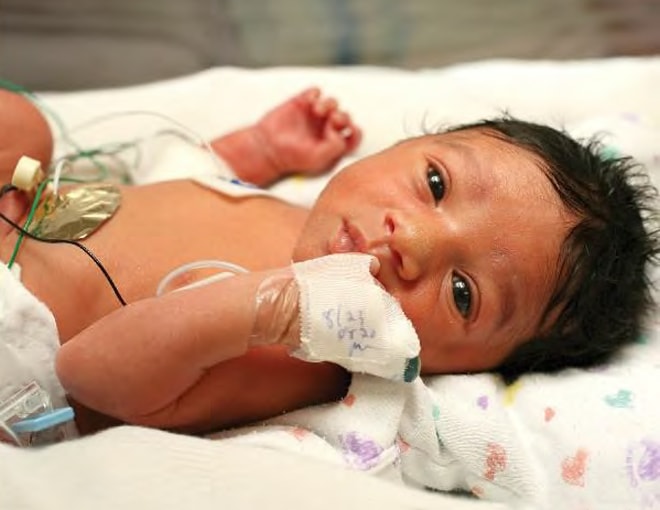Safe Sleep for Infants
Presented on .
The October session of Grand Rounds “Safe Sleep for Infants,” was viewed in 7 foreign countries and in 49 states, plus the District of Columbia.
Each year about 3,500 babies in the United States die suddenly and unexpectedly before they reach their first birthday due to sleep-related deaths. These tragedies, called sudden unexpected infant death (SUID), often occur during sleep or in the baby’s sleep area, and include sudden infant death syndrome (SIDS), accidental suffocation and strangulation in bed, and other deaths from unknown causes.
In the 1990s, a dramatic reduction in sleep-related infant deaths followed the release of recommendations and campaigns including Back-to-Sleep (now known as Safe to Sleep®). However, rates of SUIDs have remained relatively flat since 2001 and racial and ethnic disparities persist. Differences in how the causes of these deaths are reported limit our understanding and prevention efforts.
This session of Public Health Grand Rounds will discuss infant safe sleep recommendations, the need for standardized SUID investigation and reporting practices, and promising interventions.
Dr. Phoebe Thorpe and Dr. Michael Goodstein discuss ways to prevent sudden unexpected infant death (SUID). These tragedies often occur during sleep or in the baby’s sleep area, and include sudden infant death syndrome (SIDS), accidental suffocation and strangulation in bed, and other deaths from unknown causes.
Dr. Phoebe Thorpe and Dr. Samuel Hanke discuss how Dr. Hanke’s infant son, Charlie, died suddenly and unexpectedly while sleeping on his father’s chest. Charlie’s death lead to the creation of Charlie’s Kids Foundation, which educates families about infant safe sleep.
Is it okay to use sheets to cover babies?
Per the American Academy of Pediatrics Updated 2016 Recommendations for a Safe Infant Sleeping Environment, soft objects like pillows, pillow-like toys, quilts, comforters, sheepskins and loose bedding, including non-fitted sheets, blankets and should be kept away from the infant's sleep area to reduce the risk of SIDS, suffocation, entrapment, and strangulation. Infant sleep clothing, such as a wearable blanket, is preferable to blankets and other coverings to keep the infant warm while reducing the chance of head covering or entrapment that could result from blanket use. http://pediatrics.aappublications.org/content/138/5/e20162938
Is there any guidelines to educate the patient about sleep hygiene?
While the American Academy of Pediatrics safe sleep recommendations do not specifically address sleep hygiene for babies, Healthy Children from the American Academy of Pediatrics provides some suggestions that may help your baby sleep better at night: https://www.healthychildren.org/English/ages-stages/baby/sleep/Pages/Getting-Your-Baby-to-Sleep.aspx. Materials regarding infant safe sleep can be obtained from the Safe to Sleep campaign, which is administered by our federal partners at the NIH-National Institute for Child Health and Human Development. Please see their website and accompanying options for ordering materials, including pamphlets and videos for parents, caregivers and other audiences. https://www.nichd.nih.gov/sts/materials/Pages/default.aspx
- Sharyn Parks Brown, PhD, MPH
- Epidemiologist
Maternal and Infant Health Branch
Division of Reproductive Health
National Center for Chronic Disease Prevention and Health Promotion, CDC
"Trends in U.S. Sleep-related Infant Deaths"
- Roger A. Mitchell, Jr., MD, FASCP
- Chief Medical Examiner
Office of the Chief Medical Examiner
Government of the District of Columbia, Washington, DC
"Death Investigations and Safe Sleep"
- Eve Colson, MD, MHPE
- Professor of Pediatrics and Associate Dean
Program Evaluation and CQI
Washington University School of Medicine, St. Louis, Missouri
"Behavior Change and Safe Infant Sleep"
- Samuel Hanke, MD, MS
- Charlie’s Dad and President
Charlie’s Kids Foundation
Pediatric Cardiologist
Assistant Professor
Chief Patient Experience Officer
Cincinnati Children’s Hospital
"From Pain to Purpose — Using Families Stories to Promote Safe Sleep Practices"
- John Iskander, MD, MPH
- Scientific Director
- Phoebe Thorpe, MD, MPH
- Deputy Scientific Director
- Susan Laird, MSN, RN
- Communications Director
Get notified about the latest updates from Public Health Grand Rounds right in your inbox by setting up an alert today!
Get notified about the latest updates from Public Health Grand Rounds right in your inbox by setting up an alert today!Sign Up
Get notified about the latest updates from Public Health Grand Rounds right in your inbox by setting up an alert today!
This session is available for Continuing Education (CE). Register here using the course information below.
CDC Course Code: PHGR10
CPE UAN: 0387-0000-18-107-H04-P
For more information, see Grand Rounds Continuing Education.

Preterm birth is a challenge. Its causes are numerous and poorly understood. Modern technology and stronger public health strategies have made a significant impact in reducing preterm births and infant mortality. Find out how improvement efforts can reduce preterm births, especially among racial and ethnic minorities.

The infant mortality rate in the US has steadily declined over the decades. Despite overall progress, racial disparities in infant mortality persist, and preventable infant deaths continue to occur. Learn about public health, clinical, and policy strategies to improve birth outcomes.